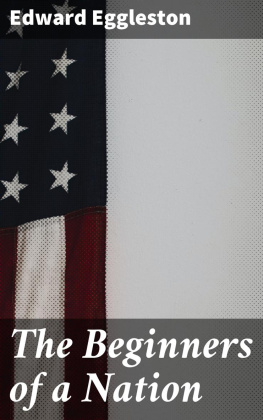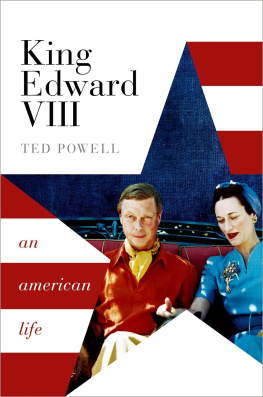Edward Eggleston
Stories of American Life and Adventure
Published by Good Press, 2019
EAN 4057664629326
Table of Contents
STORIES OF WHALING.
A WHALING SONG.
A STRANGE ESCAPE.
GRANDMOTHER BEAR.
THE GREAT TURTLE.
THE RATTLESNAKE GOD.
WITCHCRAFT IN LOUISIANA.
A STORY OF NIAGARA.
AMONG THE ALLIGATORS.
JASPER.
SONG OF MARION'S MEN.
A BRAVE GIRL.
A PRISONER AMONG THE INDIANS.
HUNGRY TIMES IN THE WOODS.
SCOUWA BECOMES A WHITE MAN AGAIN.
A BABY LOST IN THE WOODS.
ELIZABETH ZANE.
THE RIVER PIRATES.
OLD-FASHIONED TELEGRAPHS.
THE MUSKET TELEGRAPH.
TELEGRAPHING BY FIRE.
TELEGRAPHS IN THE REVOLUTION.
A BOY'S TELEGRAPH.
A BOY'S FOOLISH ADVENTURE.
A FOOT RACE FOR LIFE.
LORETTO AND HIS WIFE.
A BLACKFOOT STORY.
HOW FREMONT CROSSED THE MOUNTAINS.
FINDING GOLD IN CALIFORNIA.
DESCENDING THE GRAND CANYON.
THE-MAN-THAT-DRAWS-THE-HANDCART.
THE LAZY, LUCKY INDIAN.
PETER PETERSEN.
A STORY OF THE MINNESOTA INDIAN WAR.
THE GREATEST OF TELESCOPE MAKERS.
ADVENTURES IN ALASKA.
PREFACE.
Table of Contents
This book is intended to serve three main purposes.
One of these is to make school reading pleasant by supplying matter simple and direct in style, and sufficiently interesting and exciting to hold the reader's attention in a state of constant wakefulness; that is, to keep the mind in the condition in which instruction can be received with the greatest advantage.
A second object is to cultivate an interest in narratives of fact by selecting chiefly incidents full of action, such as are attractive to the minds of boys and girls whose pulses are yet quick with youthful life. The early establishment of a preference for stories of this sort is the most effective antidote to the prevalent vice of reading inferior fiction for mere stimulation.
But the principal aim of this book is to make the reader acquainted with American life and manners in other times. The history of life has come to be esteemed of capital importance, but it finds, as yet, small place in school instruction. The stories and sketches in this book relate mainly to earlier times and to conditions very different from those of our own day. They will help the pupil to apprehend the life and spirit of our forefathers. Many of them are such as make him acquainted with that adventurous pioneer life, which thus far has been the largest element in our social history, and which has given to the national character the traits of quick-wittedness, humor, self-reliance, love of liberty, and democratic feeling. These traits in combination distinguish us from other peoples.
Stories such as these here told of Indian life, of frontier peril and escape, of adventures with the pirates and kidnappers of colonial times, of daring Revolutionary feats, of dangerous whaling voyages, of scientific exploration, and of personal encounters with savages and wild beasts, have become the characteristic folklore of America. Books of history rarely know them, but they are history of the highest kindthe quintessence of an age that has passed, or that is swiftly passing away, forever. With them are here intermingled sketches of the homes, the food and drink, the dress and manners, the schools and children's plays, of other times. The text-book of history is chiefly busy with the great events and the great personages of history: this book seeks to make the young American acquainted with the daily life and character of his forefathers. In connection with the author's "Stories of Great Americans for Little Americans," it is intended to form an introduction to the study of our national history.
It has been thought desirable to make the readings in this book cover in a general way the whole of our vast country. The North and the South, the Atlantic seaboard, the Pacific slope, and the great interior basin of the continent, are alike represented in these pages.
STORIES OF AMERICAN LIFE AND ADVENTURE.
A WHITE BOY AMONG THE INDIANS.
Table of Contents
Among the people that came to Virginia in 1609, two years after the colony was planted, was a boy named Henry Spelman. He was the son of a well-known man. He had been a bad and troublesome boy in England, and his family sent him to Virginia, thinking that he might be better in the new country. At least his friends thought he would not trouble them so much when he was so far away.
Many hundreds of people came at the same time that Henry Spelman did. Captain John Smith was then governor of the little colony. He was puzzled to know how to feed all these people. As many of them were troublesome, he was still more puzzled to know how to govern them.
In order not to have so many to feed, he sent some of them to live among the Indians here and there. A chief called Little Powhatan asked Smith to send some of his men to live with him. The Indians wanted to get the white men to live among them, so as to learn to make the things that the white men had. Captain Smith agreed to give the boy Henry Spelman to Little Powhatan, if the chief would give him a place to plant a new settlement.
Spelman staid awhile with the chief, and then he went back to the English at Jamestown.
But when he came to Jamestown he was sorry that he had not staid among the Indians. Captain John Smith had gone home to England. George Percy was now governor of the English. They had very little food to eat, and Spelman began to be afraid that he might starve to death with the rest of them. Powhatannot Little Powhatan, but the great Powhatan, who was chief over all the other chiefs in the neighborhoodsent a white man who was living with him to carry some deer meat to Jamestown. When it came time for this white man to go back, he asked that some of his countrymen might go to the Indian country with him. The governor sent Spelman, who was glad enough to go to the Indians again, because they had plenty of food to eat.
Three weeks after this, Powhatan sent Henry Spelman back to Jamestown to say to the English, that if they would come to his country, and bring him some copper, he would give them some corn for it. The Indians at this time had no iron, and what little copper they had they bought from other Indians, who probably got it from the copper mines far away on Lake Superior.
The English greatly needed corn, so they took a boat and went up to the Indian country with copper, in order to buy corn. They quarreled with the Indians about the measurement of the corn. The Indians hid themselves near the water, and, while the white men were carrying the corn on their vessel, the Indians killed some of them. About this time, seeing that the white men were so hungry, the Indians began to hope that they would be able to drive them all out of the country.
Powhatan saved Spelman from being killed by the Indians; but, now that the Indians were at war with the white men, who were shut up in Jamestown without food, they wished to kill all the white people in the country.
Spelman and a Dutchman, who also lived with Powhatan, began to be afraid that he would not protect them any longer. So, when a chief of the Potomac Indians visited Powhatan, and asked the Dutchman and the boy to go to his country, they left Powhatan and went back with them. Powhatan sent messengers after them, who killed the Dutchman. Henry Spelman ran away into the woods. Powhatan's men followed him, but the Potomacs got hold of Powhatan's men, and held them back until Spelman could get away. The boy managed at last to get to the country of the Potomac Indians.










